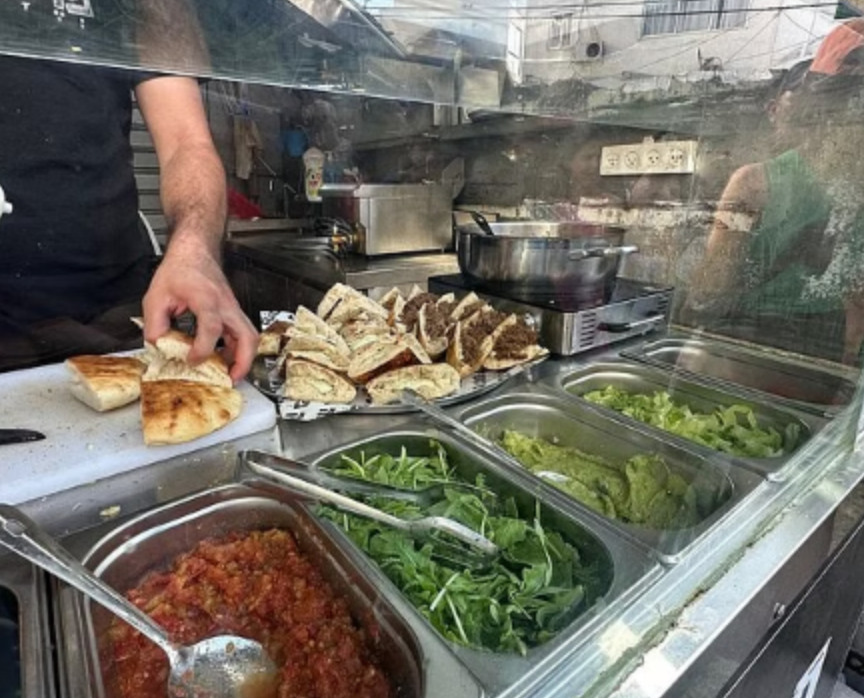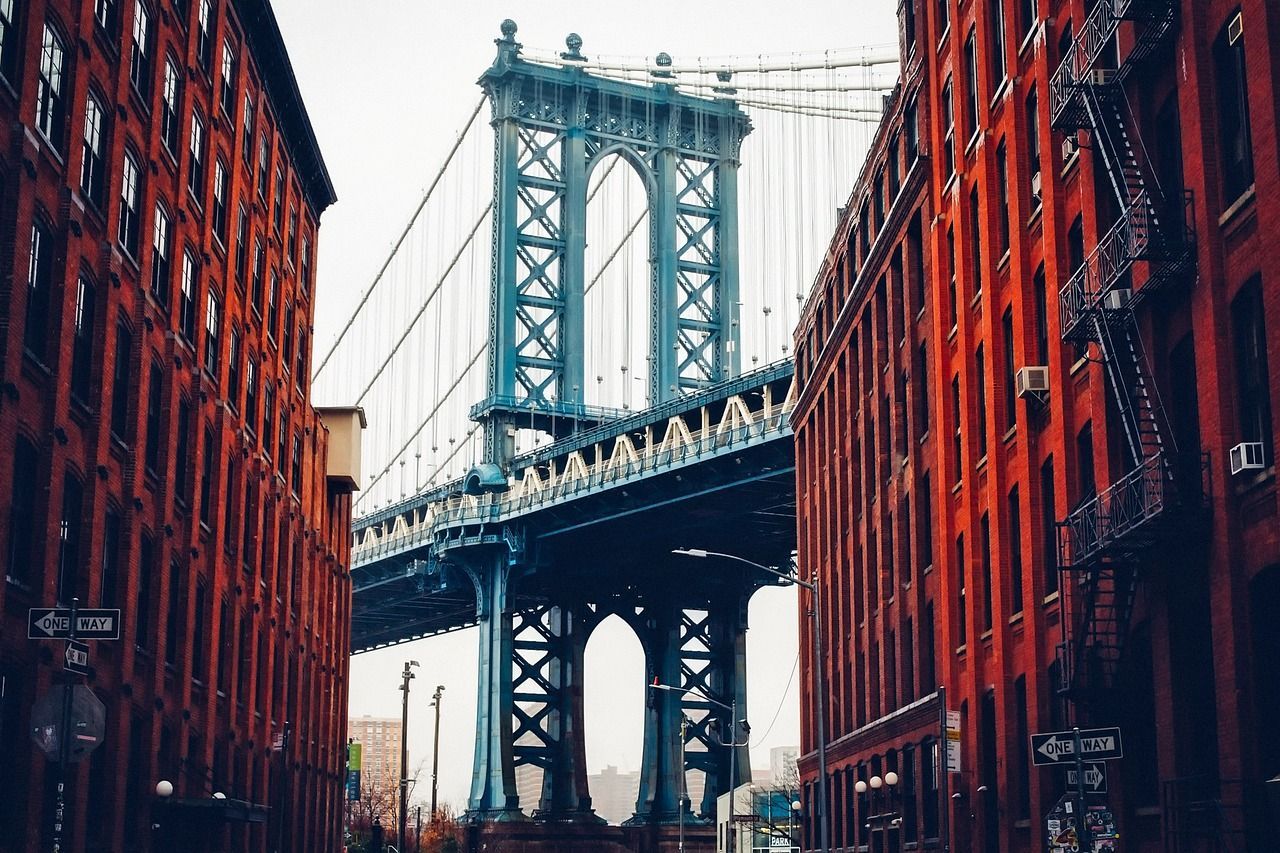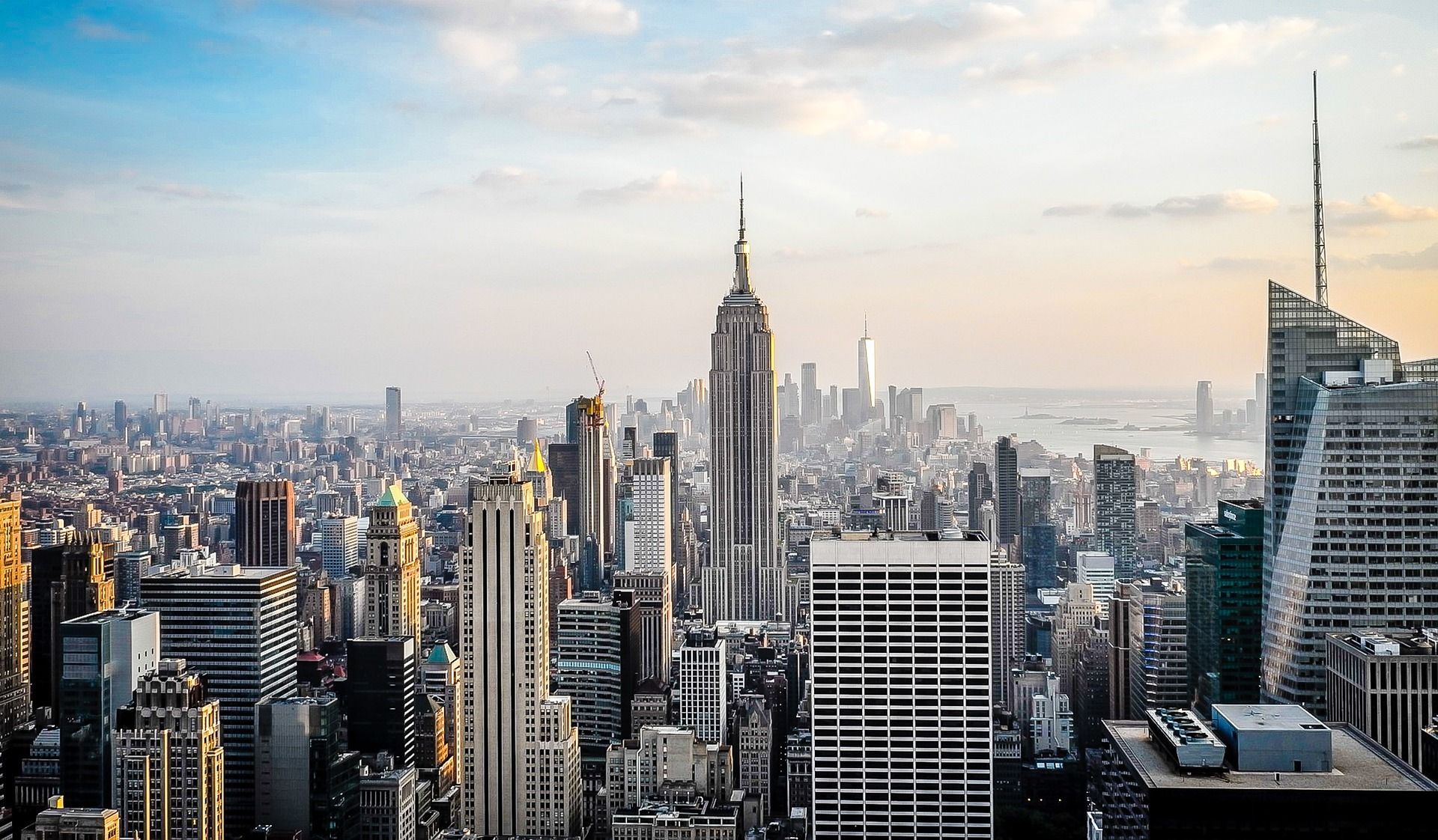11 Crazy Facts About San Francisco Only the Locals Know
March 29, 2023
San Francisco is a city known for its stunning landmarks, diverse culture, and unique history. As one of the most iconic cities in the United States, San Francisco has a rich tapestry of stories and legends that have helped to shape its character and allure. From the Golden Gate Bridge to the cable cars, the city has many famous landmarks that draw millions of visitors each year.
Whether you're a first-time visitor or a long-time resident, there are always new and interesting facts to discover about this iconic city. From its colorful past as a wild west town to its status as a hub of innovation and technology, San Francisco has a story to tell at every turn. However, there are also many lesser-known fun facts about San Francisco that are sure to delight and surprise. In this article, we delve deeper into the fascinating world of San Francisco, highlighting some lesser-known facts that are sure to pique your interest and leave you wanting to learn more.
The Color of the Golden Gate Bridge
Contrary to the name, The Golden Gate Bridge is painted in a reddish-orange color called "international orange." The color was chosen because it blends well with the natural surroundings of the bridge and provides excellent visibility in the fog that frequently engulfs the area. It is also said to have been chosen by the bridge's chief engineer, Joseph Strauss, because it complemented the surrounding hills and was a good match for the natural environment. Today, the color is synonymous with the Golden Gate Bridge and has become an iconic symbol of San Francisco.
Fog Has a Name
Yes, the fog in San Francisco is so common that it has been given a name - "Karl the Fog". The name was given to the fog by a San Francisco resident named James "Karl" the Fog, who started a Twitter account with the same name in 2010. The account tweets about the fog and its movements around the city, and has gained a large following. The fog is a common occurrence in San Francisco due to its location on the coast and the temperature changes between the cool ocean air and warmer inland temperatures.
San Francisco is Home to the Fortune Cookie
San Francisco is indeed home to the fortune cookie, which is often associated with Chinese cuisine but was actually invented in San Francisco by a Japanese-American named Makoto Hagiwara. Hagiwara was a gardener who tended the Japanese Tea Garden in Golden Gate Park and is said to have first served fortune cookies there in the early 1900s. The fortune cookie is a sweet, crispy cookie that contains a small slip of paper with a fortune or prediction on it. Today, fortune cookies are a popular treat in Chinese restaurants throughout the United States and around the world.
Prison History
San Francisco has a rich history when it comes to prisons. One of the most famous prisons in the city is Alcatraz Island, which is located in San Francisco Bay. Alcatraz was first used as a military prison in the 1850s, and later became a federal penitentiary in 1934. It housed some of the most notorious criminals in American history, including Al Capone and Robert "Birdman" Stroud, and was known for its strict rules and harsh conditions. The prison was closed in 1963 and is now a popular tourist attraction, drawing visitors from around the world.
Another historic prison in San Francisco is the San Francisco City Jail, which is located in the Hall of Justice in the city's Civic Center district. The jail has a long history and has housed many famous inmates, including Billie Holiday and Harvey Milk's assassin, Dan White. Today, the jail serves as a temporary holding facility for suspects awaiting trial or transfer to a larger prison.
There are also several other historic prisons in the San Francisco Bay Area, including San Quentin State Prison, which is located across the bay in Marin County and is California's oldest prison still in use. Overall, the prison history of San Francisco is rich and varied, and has played an important role in shaping the city's identity and culture.
San Francisco is Home to the Oldest Chinatown
San Francisco is home to the oldest and largest Chinatown outside of Asia. The San Francisco Chinatown covers 24 city blocks and is a major tourist destination, attracting millions of visitors every year. It was established in the 1850s during the California Gold Rush, when many Chinese immigrants came to the city in search of gold and work. Over time, the neighborhood has become a cultural hub for the Chinese community, with numerous restaurants, shops, and markets selling traditional Chinese goods and cuisine. Today, San Francisco's Chinatown is a vibrant and bustling community that celebrates its heritage while also embracing new cultural influences. It is an important part of the city's cultural landscape and a must-visit destination for anyone exploring San Francisco.
Population Size
According to the United States Census Bureau, as of 2020, the estimated population of San Francisco is approximately 883,869. This makes San Francisco the fourth-most populous city in California and the 16th-most populous city in the United States. San Francisco is known for being a densely populated city, with a population density of approximately 18,838 people per square mile. However, despite its relatively small size, San Francisco is a major economic and cultural center, attracting millions of visitors and residents every year. The city is renowned for its diverse population, vibrant neighborhoods, and rich cultural history.
Home to the Only Moving National Historic Landmark
San Francisco is home to the only moving national historic landmark in the United States: the cable car system. The cable car system was first introduced to San Francisco in the late 1800s as a way to transport residents up and down the city's steep hills. Today, the cable car system is a popular tourist attraction and an iconic symbol of the city. The cable cars are manually operated and use a system of cables and pulleys to move up and down the hills. There are three cable car lines in San Francisco: the Powell-Hyde, Powell-Mason, and California Street lines. The cable cars are not only a convenient mode of transportation for locals and visitors, but also a beloved part of the city's culture and history.
Crookedest Street in the World
San Francisco's Lombard Street is often referred to as the "crookedest street in the world." It is a one-block section of the street, located between Hyde and Leavenworth Streets in the Russian Hill neighborhood, that features eight hairpin turns. The street was designed in the 1920s to make it easier for vehicles to navigate the steep slope of the hill. Today, Lombard Street is a popular tourist attraction, with visitors flocking to take pictures and drive down the winding road. The street is lined with beautiful homes and gardens, and offers stunning views of the city and San Francisco Bay. Despite its popularity, Lombard Street can be congested with both vehicle and foot traffic, so it's best to plan ahead if you're hoping to visit.
Largest Number of Victorian Houses in the US
San Francisco is home to the largest number of Victorian and Edwardian houses in the United States, and possibly the world. These homes, built in the late 19th and early 20th centuries, are characterized by their ornate details and decorative features, such as turrets, bay windows, and intricate woodwork. Many of these homes were built during the city's period of rapid growth and expansion following the Gold Rush, and have since become an iconic part of San Francisco's architectural landscape. Some of the most famous Victorian houses in the city can be found in the Haight-Ashbury, Pacific Heights, and Alamo Square neighborhoods. Today, these homes are highly sought after and often command high prices on the city's competitive real estate market.
College Degrees
San Francisco has the highest percentage of residents with a college degree of any major city in the United States. According to data from the United States Census Bureau, as of 2019, approximately 57.4% of San Francisco residents aged 25 or older hold a bachelor's degree or higher. The city is home to a number of prestigious universities, including the University of San Francisco, San Francisco State University, and the California College of the Arts, as well as a large number of tech and startup companies that often require highly-educated workers. The city's reputation as an innovative and forward-thinking place also attracts a highly-educated population. The high percentage of college-educated residents has helped to make San Francisco one of the most educated cities in the world.
Crazy Number of Hills
San Francisco is known for having a crazy number of hills. There are over 50 hills throughout the city, each with its own unique character and charm. Some of the most famous hills include Telegraph Hill, which is home to the iconic Coit Tower, Russian Hill, which features the crooked Lombard Street, and Nob Hill, which is known for its historic mansions and luxury hotels. The hills can pose a challenge for both drivers and pedestrians, but they also offer stunning views of the city and San Francisco Bay. Many of the city's neighborhoods are built on steep slopes, which gives them a distinctive character and creates a sense of separation and identity between different areas of the city. The hills of San Francisco are a defining feature of the city's geography and culture.
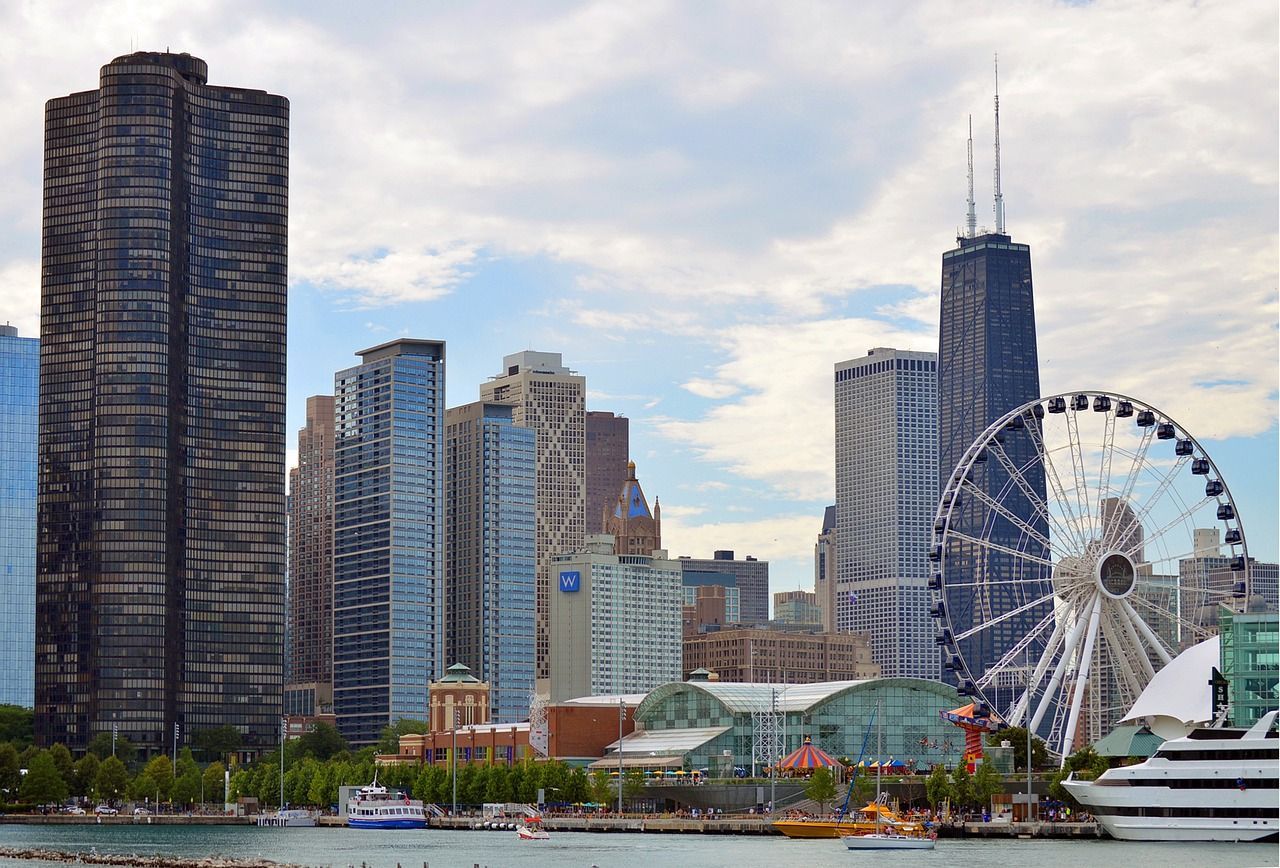
Chicago is a food lover's paradise. The city has something for everyone - from classic deep-dish pizza to world-renowned fine dining. Here’s our guide to the best restaurants in town, and how you can experience them on your own foodie tour of Chicago! Best Pizza Deep dish pizza is an iconic staple of Chicago cuisine. For the most authentic experience, try the original Gino’s East pizzeria, founded by two taxi drivers in 1966. Or go for Pizano’s Pizza & Pasta, owned by Rudy Malnati Jr., son of Rudy Malnati Sr., the creator of the first deep dish pizza. Best Burgers Kuma’s Corner in Avondale is known for its gourmet burgers with unique toppings and a metal-heavy playlist that will make any rock fan salivate. The restaurant has even been voted one of the best burger spots in America by AOL Travel. But if you want something more classic, check out Jake Melnick’s Corner Tap, which specializes in Black Angus beef burgers and hand-cut fries. Best Italian Food Chicago offers some of the best Italian dining experiences around. For authentic pasta dishes and wood-fired pizzas, head to Spiaggia on Michigan Avenue. You’ll be able to try innovative interpretations of classic Italian dishes in an award-winning setting. Or if you want something more relaxed, visit Frasca Pizzeria & Wine Bar on the west side of town for a cozy, casual atmosphere and excellent food. Best Seafood Shaw’s Crab House is the ultimate seafood experience, with menu items like crispy Maryland softshell crab and broiled lake whitefish. They also have one of the best raw bars in town, where you can get fresh oysters from both coasts and seasonally available shellfish selections. Another popular option is the retro-style Oyster Bah in Lincoln Park, serving up a variety of seafood fare including hamburgers, grilled Atlantic salmon and lobster rolls. Best Michelin Starred Restaurants For an unforgettable dining experience, you can't go wrong with a visit to one of Chicago's many Michelin-starred restaurants. Alinea is the only three-Michelin star restaurant in the city, serving up creative dishes like juniper-cured Arctic char and jasmine tea smoked duck. Or if you're looking for something more casual but still impressive, try Band of Bohemia, where they specialize in pairing unique cuisine with artisanal beers and cocktails. Finding the Most Delicious Plates Chicago has to Offer No matter your taste preferences, there’s something unique in store for every food lover on a tour of Chicago! So grab your appetite and explore the Windy City’s culinary delights today. Bon Appetit!

New York City is one of the most iconic cities in the world, with an impressive skyline, bustling streets, and plenty of cultural attractions to explore. From taking a tour of the Statue of Liberty to visiting Central Park, there's no shortage of things to do in NYC. But if you want an escape from the hustle and bustle while still staying in New York state, check out these day trips for even more exploration and discovery! Exploring Long Island Long Island is home to many beaches and coastal towns that offer a change of scenery from Manhattan’s busy streets. Hop on a train or rent a car and take off for some seaside fun. From the world-famous Jones Beach State Park to picturesque Montauk, there is something for everyone on Long Island’s shores. Visiting Hudson Valley Spend a day (or several!) exploring the countryside of upstate New York in the beautiful and historic Hudson Valley region. Visit quaint villages, explore outstanding wineries, indulge in farm-to-table cuisine, or even take a hot air balloon ride over the rolling hills. This area offers plenty of history and culture as well as gorgeous scenery and outdoor activities. Discovering The Hamptons The Hamptons are known for their luxurious resorts and spas but they also provide some of the best beaches in the state. Relax on the sand or explore some of the many attractions, shops, and restaurants that give this area its unique character. Exploring the Catskills The Catskill Mountains are the perfect getaway for outdoor enthusiasts of all kinds. Whether you want to go fishing, kayaking, or hiking, there is something for everyone here. There are also plenty of quaint towns to explore and delicious restaurants to sample in this picturesque region. Visiting Bear Mountain State Park Take a day trip upstate to visit Bear Mountain State Park where you can explore lush forests and beautiful lakeside paths. Here you will find a variety of activities from biking and boating to swimming and skiing! Exploring Connecticut Just two hours from New York City by car is the beautiful state of Connecticut. Spend a day exploring some of America’s oldest cities, such as Hartford and New Haven, or take a drive to Mystic Seaport to learn about maritime history and stroll through seaside villages. Visiting Bear Mountain State Park Take a break from city life with a trip to Bear Mountain State Park in upstate New York. This 5,000-acre park has something for everyone – fishing at Hessian Lake, hiking around Anthony’s Nose, or skiing down Bear Mountain. There’s even a carousel and zoo for the little ones! Exploring New Jersey Just a short drive from the city lies the Garden State – New Jersey. Explore this diverse and beautiful state from Atlantic City to Cape May with its sandy beaches, delicious seafood restaurants, and plenty of outdoor activities. No matter where you go in New Jersey, there's something new to discover! Discovering the Best Trips NYC Has to Offer No matter what kind of adventure you're looking for, you can find it just outside of NYC. Take a journey out of Manhattan to get away from the hustle and bustle while still enjoying all that the region has to offer! These are just some of the best day trips from New York City – why not explore them all and make some amazing memories along the way?

Get ready to embark on an unforgettable shopping adventure in Niagara Falls, where incredible deals and fantastic dining experiences await! Join us for a sightseeing tour to the renowned Fashion Outlets of Niagara Falls , where you'll discover a shopper's paradise featuring over 150 designer stores at unbeatable prices. With an exclusive Green Savings Card offering $800 in savings, a complimentary gift, and an optional VIP meal at the Hard Rock Cafe, this is one shopping experience you won't want to miss! Kick-Off Your Shopping Spree at Hard Rock Cafe Begin your day by meeting your tour group on the USA side, right in front of the iconic Hard Rock Cafe. After a brief introduction, we'll whisk you away on a comfortable and scenic ride to the famous Fashion Outlets of Niagara Falls, where a world of retail therapy awaits. Fashion Outlets of Niagara Falls: A Bargain Hunter's Dream Upon arrival at the Fashion Outlets of Niagara Falls, prepare to be amazed by the vast selection of indoor and outdoor shops featuring top designer brands at deeply discounted prices. From clothing and accessories to home goods and electronics, there's something for everyone at this popular shopping destination. As part of your tour package, you'll receive an exclusive Green Savings Card, providing you with up to $800 in additional savings at participating stores. Plus, enjoy a special free gift as a token of our appreciation for joining us on this exciting shopping journey! Refuel and Relax with a VIP Meal at Hard Rock Cafe (Optional Upgrade) After a fun-filled day of shopping, you might be feeling a bit peckish. Why not upgrade your package to include a VIP meal at the world-famous Hard Rock Cafe on your return? Indulge in a delicious meal while surrounded by an incredible collection of rock 'n' roll memorabilia. With its lively atmosphere and mouth-watering menu, the Hard Rock Cafe offers the perfect way to unwind after an exhilarating day of shopping. Explore and Shop: The All-In-One Experience The Fashion Outlets of Niagara Falls isn't just about shopping – it's also an opportunity to explore the beautiful surrounding area. Take a break from your retail adventure and venture outside, where you can enjoy a leisurely stroll or take in the picturesque scenery. You'll find plenty of photo opportunities, making this shopping trip a memorable experience in more ways than one. Plan Your Shopping Strategy: Directory and Map To make the most of your time at the Fashion Outlets of Niagara Falls, we recommend planning your shopping strategy ahead of time. Before your tour, check out the outlet's directory and map online to identify your must-visit stores. This will help you maximize your time, ensuring that you can visit all your favorite shops and discover new ones along the way. Safety and Convenience: A Stress-Free Shopping Experience Your safety and comfort are our top priorities during this shopping tour. The Fashion Outlets of Niagara Falls has implemented strict safety measures to ensure a clean and secure environment for all shoppers. Hand sanitizing stations are available throughout the center, and social distancing guidelines are in place to promote a safe shopping experience. Additionally, you'll find convenient amenities such as ample parking, restrooms, and ATMs, making your shopping trip as stress-free as possible. Your Dream Shopping Adventure The ultimate Niagara Falls outlet shopping tour offers a perfect blend of retail therapy, sightseeing, and optional fine dining at the Hard Rock Cafe. With a wide variety of designer stores, exclusive savings, and a comfortable and safe shopping environment, this tour is a must-do for anyone looking to indulge in some serious retail therapy. Don't wait any longer – book your spot on this incredible shopping adventure today and create lasting memories in Niagara Falls!

San Francisco, famously known for its tech companies and stunning architecture, is also home to a vibrant arts and music scene. Artistic expression can be found at every corner of this city, from the murals on the buildings to the booming music venues. If you are a first-time tourist, then exploring the arts and music scene is an excellent way to immerse yourself in the vibrant culture of San Francisco. In this blog post, we’ll take a tour of some of the best arts and music tour spots you shouldn't miss during your visit to San Francisco. 1. Visit the SFMOMA The San Francisco Museum of Modern Art (SFMOMA) houses artwork from renowned artists over the centuries, showcasing more than 33,000 works of art. This museum boasts a broad collection of contemporary art, photography, sculptures, and mixed media artwork. With seven floors of exhibitions, you would want to have ample time to explore this expansive collection. Plus, the SFMOMA always has fantastic temporary exhibits and installations that you won't find elsewhere. 2. Explore the Street Murals The Mission District of San Francisco has one of the most extensive street art scenes in the world. Streets and alleyways are decorated with colorful murals and graffiti, representing San Francisco's diverse communities. The murals not only reflect the history of the community but also embody the area's political struggles. Simply walking down the streets, taking in the artwork's beauty, is a journey into the soul of San Francisco's culture. 3. Attend the SFJazz Center Located in San Francisco's Hayes Valley neighborhood, the SFJazz center is a mecca for music enthusiasts. SFJazz is a premier destination that celebrates every form of jazz from all around the world. This art center features performances by both up-and-coming jazz musicians and established artists. Whether you are a jazz aficionado or a newcomer to the genre, SFJazz offers an excellent platform to learn more about the music and its history. 4. Watch a performance at the Warfield The Warfield, located in the heart of San Francisco's Theater District, is a historic concert venue that has been in operation since 1922. Once you step inside, you’re immediately struck by the stunning architecture. With its Art Deco design, the Warfield has an old-world charm that can rival any other music venue in the world. This iconic music hall has seen performances from some of the biggest music legends of our time, such as the Grateful Dead and the Black Keys. 5. Catch a Play at the American Conservatory Theatre If you're more into theater, then the American Conservatory Theatre (ACT) is a must-visit spot. Located in the city's Financial District, the ACT offers a variety of dramatic performances that cater to everyone. Founded in 1965, the ACT has since become known for its innovative productions and superb acting. Whether it's Shakespearean plays or contemporary plays, the ACT stages productions that offer insight into San Francisco's rich artistic culture. 6. The Fillmore For music lovers, the Fillmore is an iconic venue that has hosted legends such as Jimi Hendrix and Janis Joplin. The Fillmore showcases a diverse range of musical genres and is known for its exceptional sound quality. Check out their website to see what’s playing during your visit and book your tickets online. Expect an unforgettable experience that you can boast to your family and friends. 7. The de Young Museum The de Young Museum, located in Golden Gate Park, is a striking fusion of art and architecture. The museum houses an extensive collection of American Art from the 17th through 21st centuries, along with Native American art and textiles from around the world. Don’t miss the tower observation deck for magnificent views of the park and the San Francisco skyline. 8. The War Memorial Opera House The War Memorial Opera House is the home of the San Francisco Opera and Ballet. The theatre’s stunning interior with grand chandeliers and a beautifully painted ceiling, is a visual treat even before the show begins. The Opera House offers pre-show lectures, and most performances have English subtitles, making it more immersive. Attend a show to get a taste of the city’s high culture scene. 9. The Exploratorium The Exploratorium, located on Pier 15, is a hands-on museum of science, art, and human perception. It’s perfect for families with curious young ones, but it’s also fascinating for adults. The museum has hundreds of interactive exhibits that allow visitors to explore everything from sound to light to social behavior. Go during the evening for their popular After Dark events – a lively mix of science and the arts with cocktails. 10. Visiting Dear San Francisco at Club Fugazi Theater Finish out your San Francisco arts and music tour with a visit to Club Fugazi Theater for a heartwarming musical revue entitled Dear San Francisco. The show is a delightful tribute to SF and its people, showcasing the city's history, people, landmarks, neighborhoods, and the extraordinary spirit of the city by the bay. The stage show features engaging performances by a talented cast and is a perfect way to end any San Francisco tour. 11. Exploring the Mission District San Francisco's Mission District is a cultural hub brimming with arts and music spots. Start your tour with a visit to the Clarion Alley street murals, where a series of colorful paintings on the wall tell stories of community issues, activism, and political causes. Then proceed to the Mission Cultural Center for Latino Arts, a space that celebrates the art and culture of the Latino community through exhibitions, workshops, and educational programs. End your tour of the Mission District at the Balmy Alley murals, another street art destination, and a homage to people's history in the Bay Area. 12. Indulging in Jazz at Yoshi's Yoshi's Jazz Club and Japanese Cuisine in Oakland is a must-visit for any jazz enthusiast touring the Bay Area. The club's acoustics are impeccable, and the décor is a delight to the eyes. Yoshi's has hosted legendary musicians such as Ahmad Jamal, Tony Bennett, and Esperanza Spalding. Pair an evening of jazz with a delectable Japanese meal for a sensory experience of a lifetime. 13. Soaking in the Culture at the Asian Art Museum The Asian Art Museum is the largest museum devoted to Asian art in the United States. The museum was founded in 1966 and has a collection of over 18,000 artworks from across Asia spanning 6000 years. The museum also hosts various cultural events such as film screenings, music performances, and talks related to Asia's diverse cultures. Visitors can spend hours exploring the galleries, soaking in the beauty and complexities of Asian art. 14. The Beetles Experience at The Great American Music Hall Calling all Beetles fans! Book a ticket to "The White Album Live" show at the Great American Music Hall to experience the Beetles' 1968 release in its entirety. The venue is a beautiful psychedelic ballroom and has hosted concerts by famous artists such as Grateful Dead, Etta James, and Janis Joplin. The Great American Music Hall is a memorable spot for any music lover who wants to be a part of San Francisco's rich music history. 15. Palace of Fine Arts Theatre Located in the Marina District, the Palace of Fine Arts Theatre is a stunningly beautiful building that is home to a variety of performances, from classical music to modern dance. The theatre has a long and interesting history, having been built in the early 20th century for the Panama Pacific Exposition. It's the perfect spot for anyone interested in fine arts and theatre. Deciding to Explore All the Greatness of San Francisco Immersing yourself in San Francisco's vibrant arts and music scene is an unforgettable experience that offers a rich tapestry of cultural diversity, creative expression, and historical significance. From the iconic venues and world-class performances to the thriving local art galleries and street art, there is something for everyone to explore and enjoy. So, whether you're a seasoned art enthusiast or simply looking to discover the soul of this captivating city, San Francisco's arts and music scene will undoubtedly leave you inspired, enriched, and yearning for more. Don't miss out on the opportunity to delve into the heart of San Francisco's creative community and make lasting memories in the process.
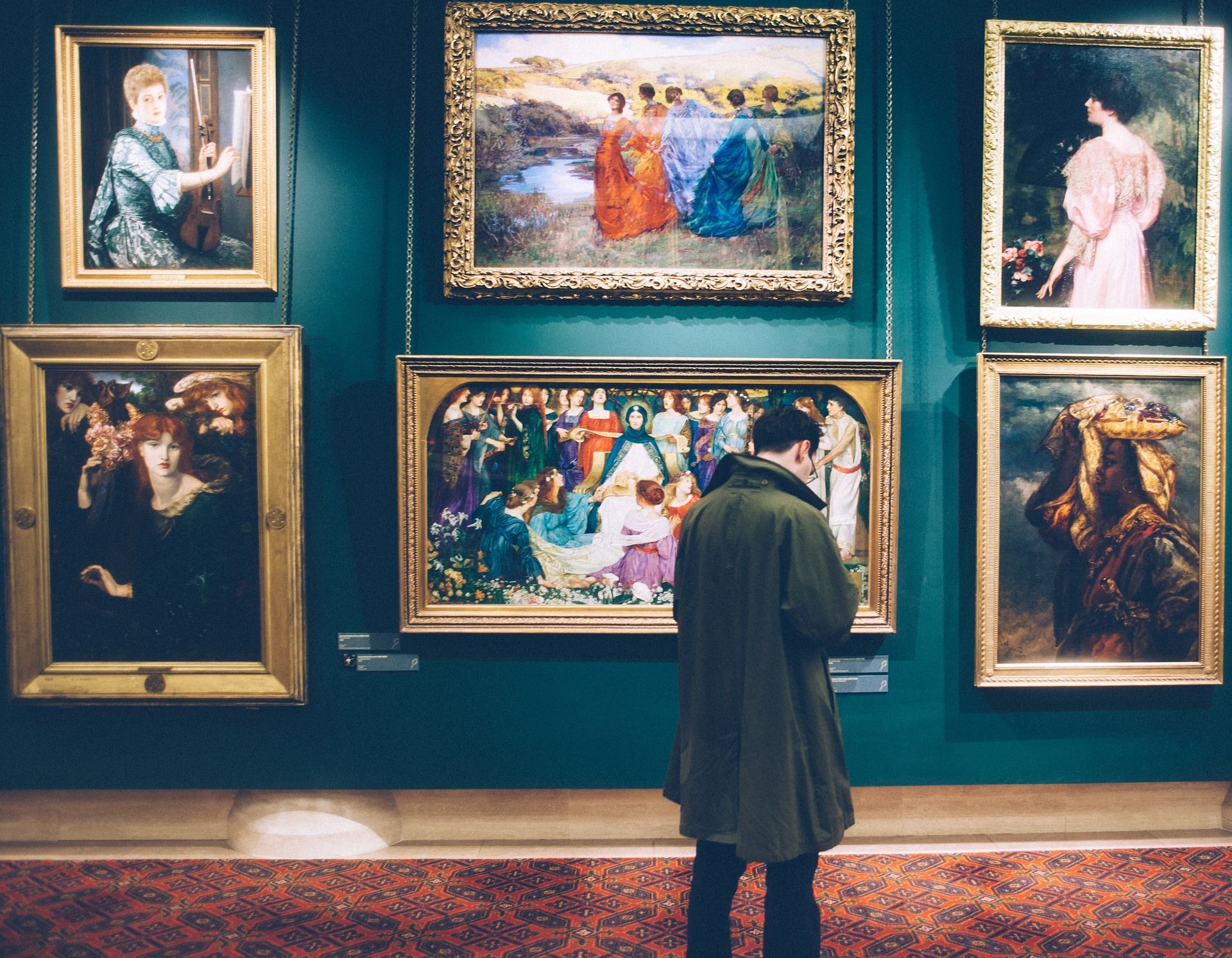
New York City is one of the most culturally diverse places in the world, and this is reflected in the incredible museums it has to offer. From contemporary art to ancient history, there is a museum in New York for every taste. Whether you're a first-time visitor or a seasoned traveler, exploring the city's museums is a must. To make your life easier, we've put together a list of some of the best museums in New York City that are definitely worth a visit. 9/11 Museum The 9/11 Memorial and Museum is located at the World Trade Center site in Lower Manhattan, New York City. The museum is dedicated to preserving the memory of the September 11, 2001 terrorist attacks, as well as the lives lost and the heroism shown on that day. The museum's exhibitions feature artifacts, photos, videos, and personal stories that illustrate the events of 9/11 and their aftermath. The museum includes exhibits on the history of the World Trade Center, the attacks themselves, and the rescue and recovery efforts that followed. Some of the museum's most powerful exhibits include the "Survivor Stairs," which were used by hundreds of people to escape the World Trade Center buildings, and the "In Memoriam" exhibit, which pays tribute to the lives lost in the attacks. The 9/11 Memorial and Museum also includes two large reflecting pools, which are located in the footprint of the original Twin Towers. The names of the victims of the attacks are inscribed on bronze panels surrounding the pools. The 9/11 Memorial and Museum is open seven days a week, and visitors can purchase tickets online in advance or at the museum. Audio guides are available for an additional fee. The Metropolitan Museum of Art The Metropolitan Museum of Art, also known as "the Met," is one of the largest and most renowned art museums in the world. It is located on Fifth Avenue in New York City and houses over two million works of art spanning 5,000 years of human history. The museum's collections include art and artifacts from around the globe, including works from ancient Egypt, Greece, and Rome, as well as European paintings, sculptures, and decorative arts from the Middle Ages to the present day. The Met also has a large collection of American art, including paintings, sculptures, and decorative objects from the colonial period to contemporary times. Some of the museum's most famous works include the Egyptian Temple of Dendur, the Greek and Roman galleries, the medieval collection, and paintings by masters such as Rembrandt, Vermeer, and Van Gogh. The Met also features a vast collection of Asian art, including Chinese and Japanese paintings, ceramics, and textiles. In addition to its permanent collections, the Met hosts a variety of temporary exhibitions throughout the year, featuring works by contemporary artists, as well as themed exhibitions exploring various aspects of art and culture. The Met is open seven days a week and offers a range of admission options, including pay-what-you-wish for New York State residents and students. Visitors can also take advantage of guided tours, audio guides, and special programs and events throughout the year. American Museum of Natural History The American Museum of Natural History is a world-renowned science museum located on the Upper West Side of Manhattan in New York City. Founded in 1869, the museum houses a vast collection of specimens and artifacts from the natural world, including fossils, rocks, minerals, plants, and animals. The museum is divided into several sections, each exploring different aspects of the natural world. The Hall of Saurischian Dinosaurs features life-sized models and fossils of some of the most well-known dinosaurs, including Tyrannosaurus rex and Stegosaurus. The Rose Center for Earth and Space includes exhibits on astronomy and cosmology, as well as a planetarium that offers daily shows. Other popular exhibits at the museum include the Hall of Biodiversity, which explores the diversity of life on Earth, and the Hall of Human Origins, which examines the evolutionary history of our species. The museum also features several dioramas showcasing different ecosystems, including African elephants, North American mammals, and birds of the world. In addition to its permanent exhibits, the museum hosts a range of temporary exhibitions throughout the year, as well as special events and programs for visitors of all ages. The American Museum of Natural History is open seven days a week, and admission is free for all visitors. However, there is a suggested donation for non-New York State residents. Visitors can also purchase tickets for special exhibits, programs, and planetarium shows. The Museum of Modern Art The Museum of Modern Art, also known as MoMA, is a world-renowned art museum located in Midtown Manhattan in New York City. Founded in 1929, the museum is dedicated to showcasing modern and contemporary art from around the world. MoMA's collection includes paintings, sculptures, photographs, films, and other types of artwork, with a particular focus on works from the late 19th century to the present day. Some of the museum's most famous pieces include Vincent van Gogh's "The Starry Night," Pablo Picasso's "Les Demoiselles d'Avignon," and Salvador Dalí's "The Persistence of Memory." The museum is also home to a significant collection of American art, including works by Jackson Pollock, Andy Warhol, and Jasper Johns. Additionally, MoMA has an extensive film collection and regularly screens films from all over the world, as well as hosting film festivals and other special events. MoMA underwent a major renovation and expansion in 2019, which added new gallery space and improved accessibility. The museum also features several restaurants, a gift shop, and other amenities for visitors. MoMA is open seven days a week, and admission is free for all visitors on Fridays from 5-9pm. Regular admission fees apply at all other times, but visitors can purchase tickets online in advance to avoid waiting in line. The Whitney Museum of American Art The Whitney Museum of American Art is a museum located in the Meatpacking District of Manhattan in New York City. The museum was founded in 1931 by Gertrude Vanderbilt Whitney, a sculptor and art patron, and is dedicated to showcasing American art from the 20th and 21st centuries. The museum's permanent collection includes works by many notable American artists, including Edward Hopper, Georgia O'Keeffe, Jackson Pollock, and Andy Warhol. The Whitney also hosts a range of temporary exhibitions throughout the year, featuring works by emerging and established artists alike. In addition to its art exhibitions, the Whitney offers a variety of programs and events for visitors of all ages, including lectures, workshops, and tours. The museum also features a rooftop sculpture garden with stunning views of the city skyline. The Whitney Museum is open seven days a week, and visitors can purchase tickets online in advance or at the museum. The museum is also accessible by public transportation, with several subway lines and bus routes stopping nearby. The Guggenheim Museum The Solomon R. Guggenheim Museum, commonly referred to as the Guggenheim Museum, is a modern and contemporary art museum located on Fifth Avenue in New York City. Designed by Frank Lloyd Wright, the building is an architectural landmark known for its unique spiral shape. The museum's collection includes works by many influential modern and contemporary artists, including Pablo Picasso, Jackson Pollock, and Mark Rothko. The Guggenheim also hosts a range of temporary exhibitions throughout the year, featuring works by emerging and established artists. In addition to its art exhibitions, the Guggenheim Museum offers a range of programs and events for visitors of all ages, including lectures, workshops, and tours. The museum also has a café and a gift shop. The Guggenheim Museum is open seven days a week, and visitors can purchase tickets online in advance or at the museum. The museum is also accessible by public transportation, with several subway lines and bus routes stopping nearby. Experiencing The Best of NYC's Museums Visiting New York City's museums is an experience like no other. From classic works of art to contemporary exhibits, there is something for everyone. The museums on this list are just a handful of the incredible institutions in the city, so be sure to explore as many as you can. With so many options, you're bound to find something that interests you, and who knows, you just might discover something new about yourself. Happy exploring!
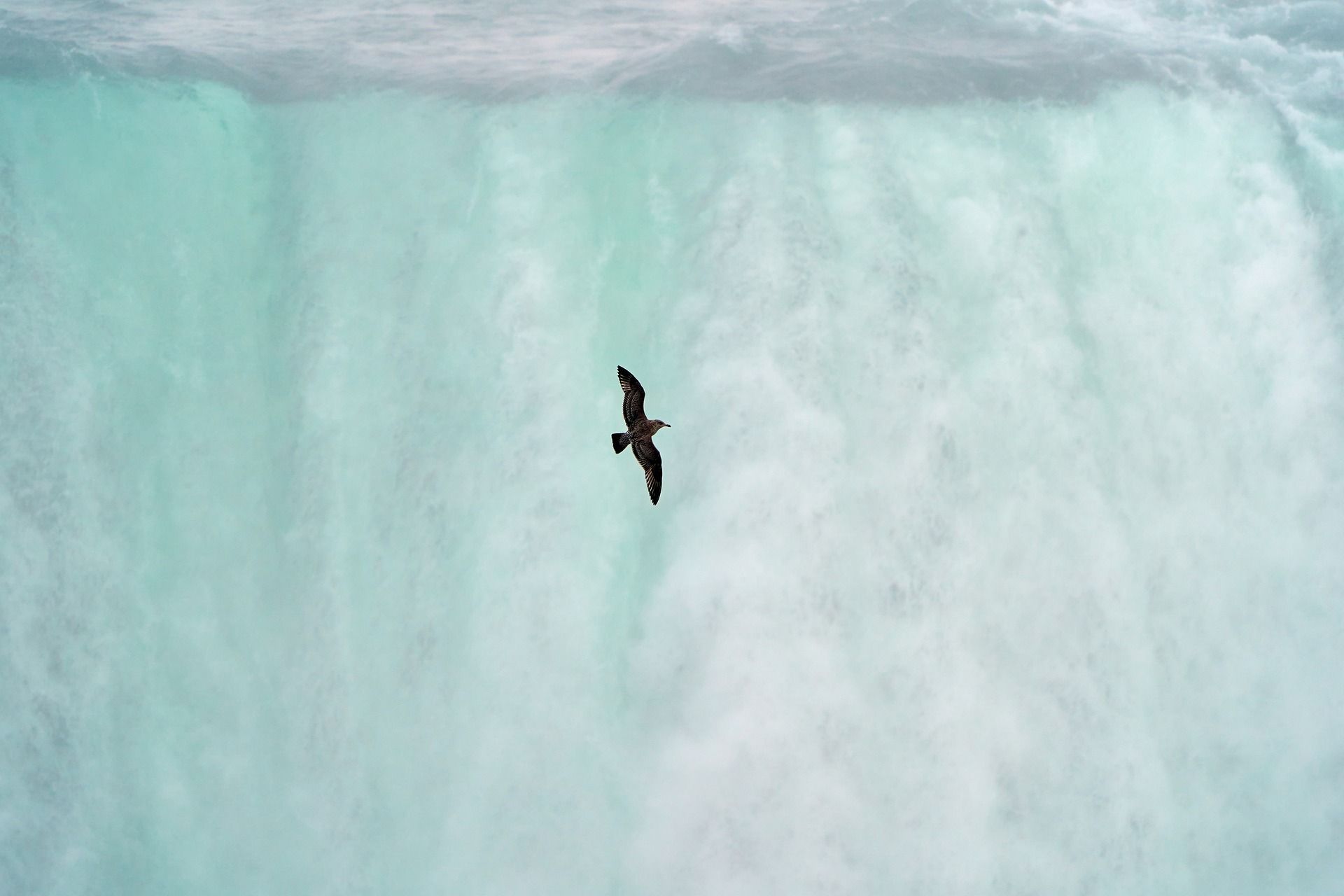
When you think of romantic destinations, Niagara Falls is probably one of the first places that comes to mind. And with good reason! With its stunning natural beauty, luxurious accommodations, and endless array of romantic activities, Niagara Falls is the perfect place to celebrate your love and create memories that will last a lifetime. From moonlit walks along the falls to cozy dinners for two overlooking the water, Niagara Falls offers something for every type of couple. In this article, we'll show you how to make the most of your romantic getaway to Niagara Falls, with tips and suggestions for everything from where to stay to what to do. So sit back, relax, and get ready to fall in love all over again at one of the most enchanting destinations in the world. Take a boat tour One of the best ways to experience Niagara Falls is by taking a boat tour. The Maid of the Mist boat tour is an iconic experience that takes you right up to the falls. You'll feel the mist on your face and be blown away by the sheer power of the cascading water. For an even more romantic experience, consider taking an evening tour where you can see the falls lit up by colorful lights. Explore the Niagara wine region Niagara Falls is located in the heart of Ontario's wine region, which means there are plenty of vineyards to explore. Book a tour and taste some local wines with your partner. Some vineyards even offer romantic picnic lunches paired with their wines. Go on a horseback ride Going on a horseback ride in Niagara Falls is a unique and unforgettable way to experience the natural beauty of the area. With its lush forests, fields, and scenic countryside, Niagara Falls offers several horseback riding opportunities that cater to riders of all skill levels. One popular option is the Niagara Riding Stables, which offers guided horseback rides through wooded trails, fields, and scenic countryside. Riders can enjoy breathtaking views of the Niagara River and gorge while experiencing the thrill of riding a horse. Happy Trails Riding Stables is another popular option for horseback riding in Niagara Falls. The stables offer guided rides through scenic countryside, with trails that take riders through fields, wooded areas, and along the Niagara Escarpment. For those interested in a unique horseback riding experience, Niagara Falls Horseback Riding Tours offer guided rides through local vineyards and wineries. These tours provide riders with a unique perspective of the Niagara countryside while enjoying the company of fellow riders and expert guides. Take a scenic drive Taking a scenic drive at Niagara Falls is a must-do experience for anyone visiting the area. With its stunning natural beauty and diverse landscapes, Niagara Falls offers several picturesque routes that are perfect for a leisurely drive. One of the most popular scenic drives in the area is the Niagara Parkway, which offers spectacular views of the falls, parklands, and historic sites. Along the way, you can stop at Niagara Falls State Park, Queenston Heights Park, and Niagara-on-the-Lake to take in the scenery, snap photos, and learn about the area's history and culture. The Niagara Wine Trail is another popular scenic drive option, featuring over 20 wineries and vineyards along a picturesque route through the Niagara countryside. This drive offers the chance to taste some of the region's best wines and enjoy the scenic beauty of the vineyards and surrounding landscape. For those interested in historic sites and natural wonders, the Niagara Falls Boulevard scenic drive is a great option. This route offers views of the falls, Niagara River, and historic sites such as the Niagara Gorge Discovery Center, Whirlpool State Park, and Old Fort Niagara. Whether you're looking for a romantic drive with your partner or a fun activity with family and friends, a scenic drive in Niagara Falls is the perfect way to experience the natural beauty of the area at your own pace. Stay in a romantic hotel Staying in a romantic hotel in Niagara Falls is an ideal way to enhance your couple's getaway and create unforgettable memories. With luxurious amenities, breathtaking views, and a variety of romantic touches, these hotels offer the perfect setting for a romantic escape. One of the most popular options is the Marriott Fallsview Hotel & Spa, which offers stunning views of the falls and a variety of amenities such as a spa, indoor pool, and romantic packages that include champagne and chocolate-covered strawberries. The Sheraton on the Falls is another top choice, with its beautiful guest rooms and suites, on-site restaurants, and proximity to the falls. For a truly luxurious experience, consider the Niagara Fallsview Casino Resort, which offers upscale accommodations, a casino, and a variety of dining and entertainment options. This resort is perfect for couples who want to indulge in all the best Niagara Falls has to offer. Staying in a romantic hotel in Niagara Falls also provides easy access to the area's top attractions, such as boat rides, scenic walks, and wine tastings. Plus, with the romantic atmosphere of the hotel, you can create an intimate and memorable experience without even leaving your room. From ordering room service to enjoying a soak in a private hot tub, a romantic hotel stay in Niagara Falls is sure to create lasting memories for you and your partner. Go shopping Niagara Falls offers plenty of shopping opportunities for travelers looking for souvenirs, gifts, and unique finds. The area boasts a variety of shops, markets, and specialty stores that cater to a range of interests and budgets. For those looking for classic souvenir items, souvenir shops located in the Niagara Falls State Park and Clifton Hill areas offer a variety of items such as t-shirts, keychains, and magnets. These items make great gifts for friends and family back home and are a fun way to remember your trip to Niagara Falls. For fashion and accessories shopping, the Fashion Outlets of Niagara Falls and the Outlet Collection at Niagara are popular options. These shopping centers feature a variety of well-known brands and offer discounts and deals on clothing, accessories, and home goods. Those looking for locally-made gifts and unique finds should check out the art and craft markets in Niagara Falls. The Niagara Falls Art Market and the Niagara Falls Farmers Market offer a range of handmade jewelry, artwork, and local produce. Visitors can also explore specialty stores such as chocolate shops and hot sauce stores, which offer unique and flavorful products that make great gifts. Traveling to Niagara Falls with Your Significant Other Niagara Falls is the ultimate romantic getaway. From taking a boat tour to exploring the local vineyards, there are plenty of activities for couples to enjoy together. Book a stay at a romantic hotel and enjoy the beautiful scenery from your own room. Whether you're looking for adventure or relaxation, Niagara Falls has something for everyone. So, come and start planning your next romantic getaway to Niagara Falls today!

